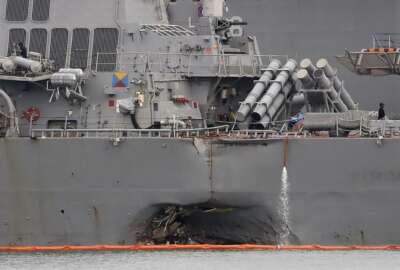
Government shares what it knows
Opioids to asteroids: agencies, industry and academia trade knowledge, but not dollars.
Here’s the thing about opioids: They’re excellent analgesics for traumatic situations. But if you prescribe them for long-term pain control, they become addictive. So why do doctors keep doing this?
Military doctors no longer do. I learned that from Dr. Chester “Trip” Buckenmaier in this inverview. Buckenmaier is a veteran medic of Iraq and Afghanistan, a board-certified anesthesiologist, and a professor at the Uniformed Services University of the Health Sciences (USU) in Bethesda. He’s prominent in the field of pain management. A self-described “painiac,” Trip witnessed a lot of severe discomfort on evacuation flights to the medical center at Landstuhl, Germany. Opioids did the trick.
Trip explains how over time, military practitioners learned to transition injured service members to holistic pain management plans, partly to avoid opioid addiction. Plans may consist of less powerful analgesics coupled with acupuncture, chiropractic treatment, massage and psychology. This, he said, totally modernized pain management, moving out of the Civil War era. It recognizes pain as a disease itself, not just the byproduct of injury or another disease.
Buckenmaier says the military recognized the high potential for opioid addiction a decade before the rest of the country.
Now that knowledge is transferring to the private sector, thanks to a collaboration between USU and West Virginia University. West Virginia is among the states with the worst rates of opioid overdose deaths — 41 per 100,000 people, or four times the national average.
The opioid addiction problem has many causes, not all of them caused by careless prescriptions. Some people use these drugs to get high. Still, the military knowledge transfer presents a lever for reducing the crisis.
Academic, industrial and government research and engineering have long been a combined source of innovation. This struck me as a poignant, but powerful example.
NASA is also in the business of knowledge sharing. Thanks to the way the original NASA-enabling legislation was written back in 1958, the agency can enter into special relationships with companies known as Non-Reimbursable Space Act Agreements. As Associate Administrator Steve Jurczyk explains, this flexible mechanism lets NASA pay contractors for R&D if it wishes. Or contractors can pay NASA for testing and verification, or other services.
The recent slew of collaborations involves no money. Each side has intellectual assets the other can use. NASA is simultaneously planning its own next set of missions to outer, outer space at the same time it’s encouraging the development of a more robust commercial space industry for launching satellites and servicing the International Space Station.
Space exploration, as it always has, spawns impressive technologies. President Kennedy said the difficulty of reaching the moon would summons the best of American technology and manufacturing. The latest NASA agreements cover things like microcircuits with software-based self-healing to augment its physical radiation hardness; electrical impulse propulsion in space; radio frequency photonics for improved communications.
Industry and NASA’s own scientists and engineers have expertise in these and many other topics. Now they’re putting their heads together.
Copyright © 2025 Federal News Network. All rights reserved. This website is not intended for users located within the European Economic Area.
Tom Temin is host of the Federal Drive and has been providing insight on federal technology and management issues for more than 30 years.
Follow @tteminWFED






